Tazio Nuvolari
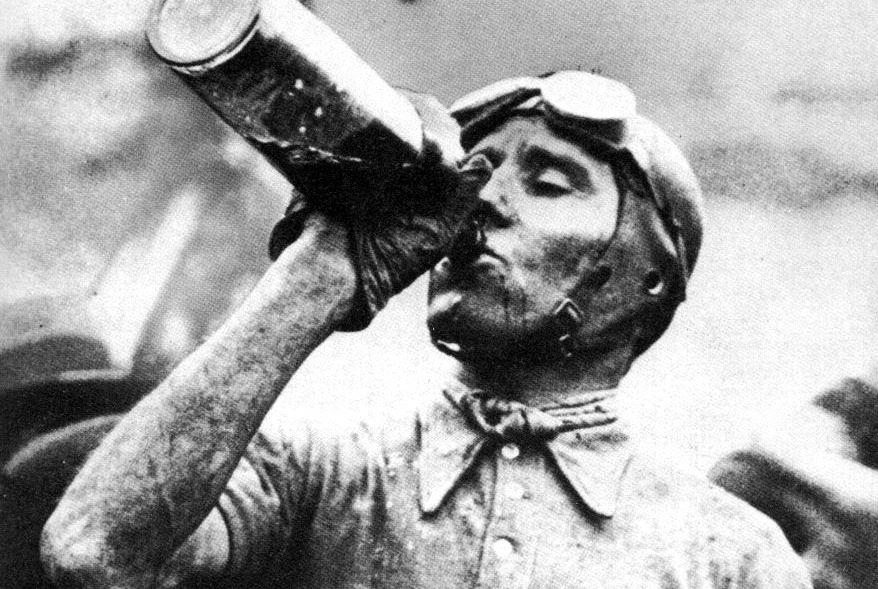
Tazio Nuvolari the legend of legends, the ace of the thrill, lies among his trophies with the pilot's helmet.
55.000 people attended his funeral, in a mile long procession. The coffin, placed on a car chassis, was pushed by Alberto Ascari, Luigi Villoresi and Juan Manuel Fangio.
Ferdinand Porsche called him: “the greatest driver of the past, the present and the future”.
Enzo Ferrari called him “the inventor of the four wheel drift” and said: “nobody like Tazio Nuvolari combined such high sensitivity of the machine to an almost inhuman courage”.
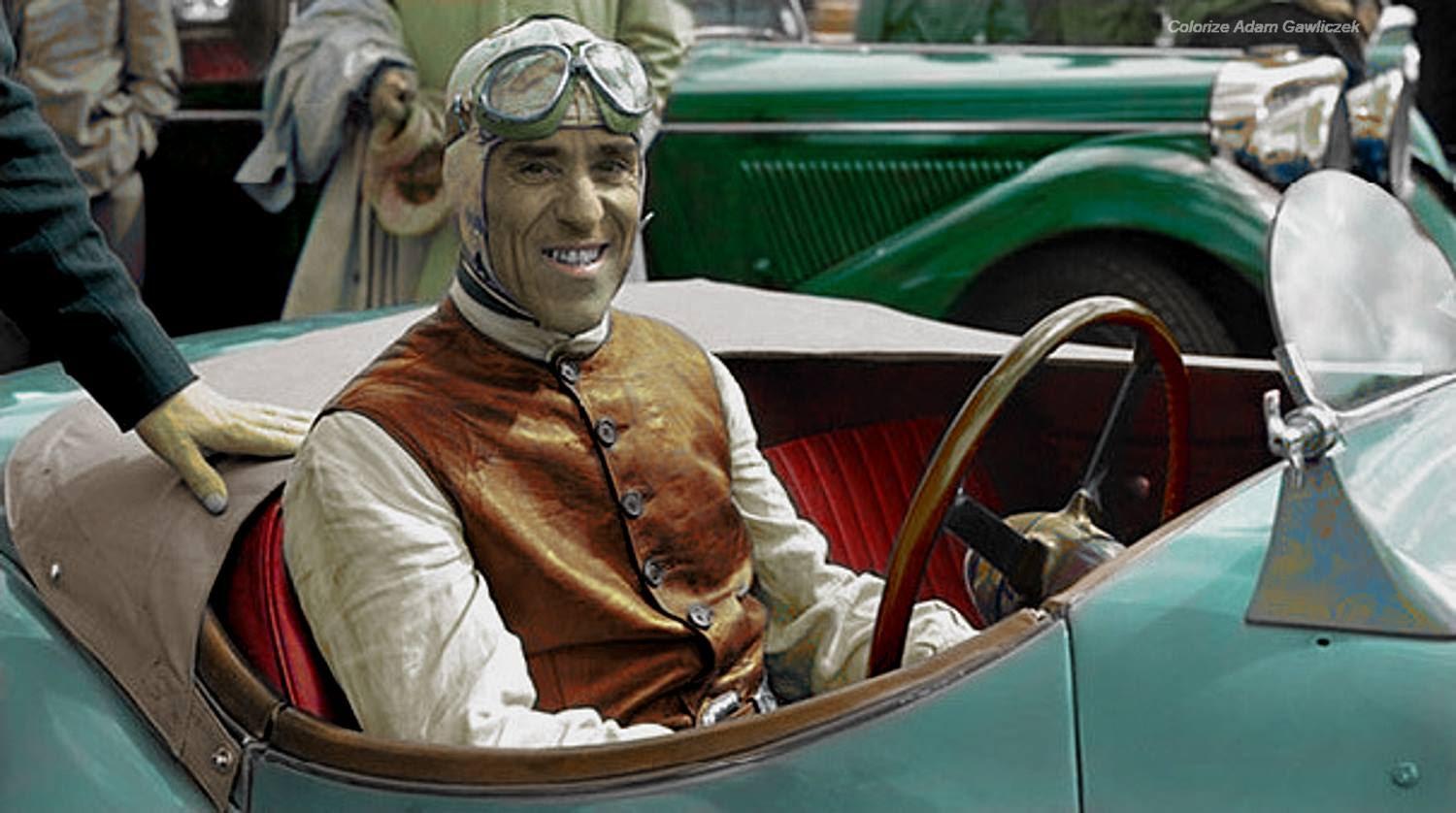
Born on the 16th of November in Castel d’Ario, near Mantua - Italy, he died on the 11th of August 1953, aged 60, in Mantua.
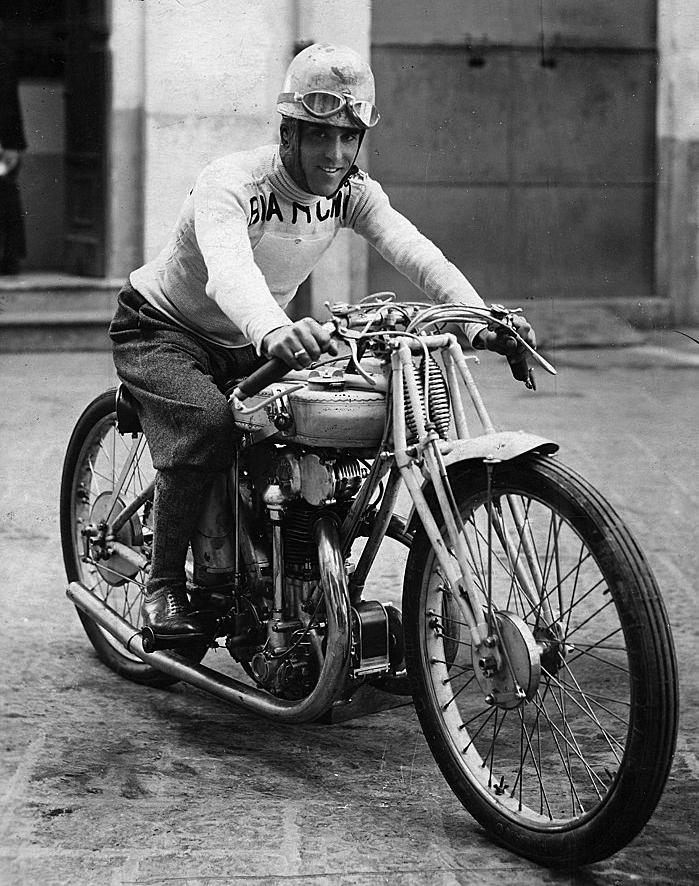
First he raced motorcycles and then he concentrated on sports cars and single-seaters (first victory, Rome 1927 with a Bugatti, last win in 1946 with a Maserati). Resident in Mantua, he was known as 'Il Mantovano volante' (The Flying Mantuan) and nicknamed 'Nivola'. His victories—72 major races, 150 in all — included 24 Grands Prix, five Coppa Cianos, two Mille Miglias, two Targa Florios, two RAC Tourist Trophies, a Le Mans 24-hour race and a European Championship in Grand Prix racing. His teams were Bugatti, Alfa Romeo, Ferrari, Maserati, Auto Union.
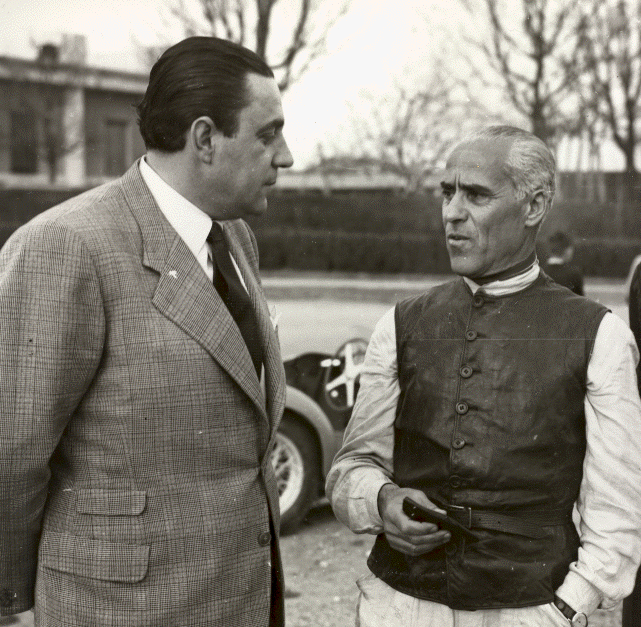
Tazio Nuvolari and Karl Abarth.
A man with incredible qualities, who was able to really impossible feats. As July 16.1935, when he achieved the 'Impossible Victory', which many regard as the greatest win in all of motor racing history: driving an outclassed Alfa Romeo P3 (3167 cc, supercharged, 265 hp) in the German Grand Prix at the Nürburgring, he beat all the dominant German cars—five Mercedes-Benz W25s (3990 cm³, 8C, supercharged, 375 hp (280 kW) driven by Caracciola, Fagioli, Lang, von Brauchitsch and Geyer) and four Auto Union Bs (4950 cc, 16C, supercharged, 375 hp (280 kW) driven by Rosemeyer, Varzi, Stuck and Pietsch). The crowd of 300,000 applauded Nuvolari, but the representatives of the Third Reich were enraged. Nuvolari mocked, on the final lap, the Mercedes of von Brauchitsch. The organizers, sure of the success of one of them, did not even have the disk of the Italian anthem, that Nuvolari, however, had brought in his suitcase, convinced as usual not to start beated. From that day, for the Germans, Mantuan champion became "der Teufel", the Devil.
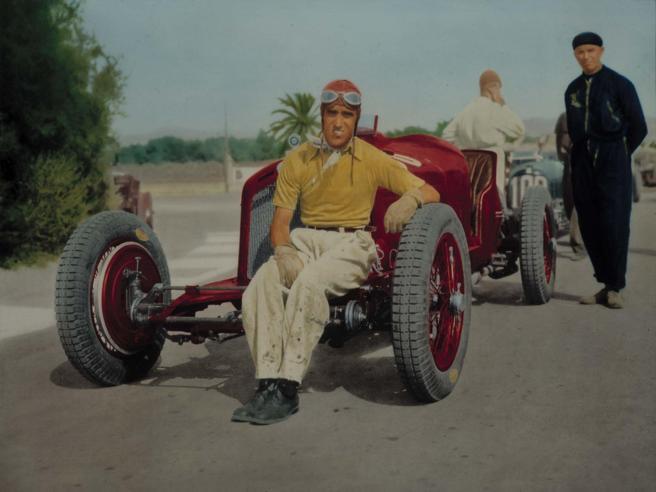
Tazio Nuvolari was not simply a racing driver. To Italy he became an idol, a demi-god, a legend, epitomising all that young Italy aspired to be; the man who 'did the impossible', not once but habitually, the David who slew the Goliaths in the great sport of motor racing. He was “Il Maestro”.
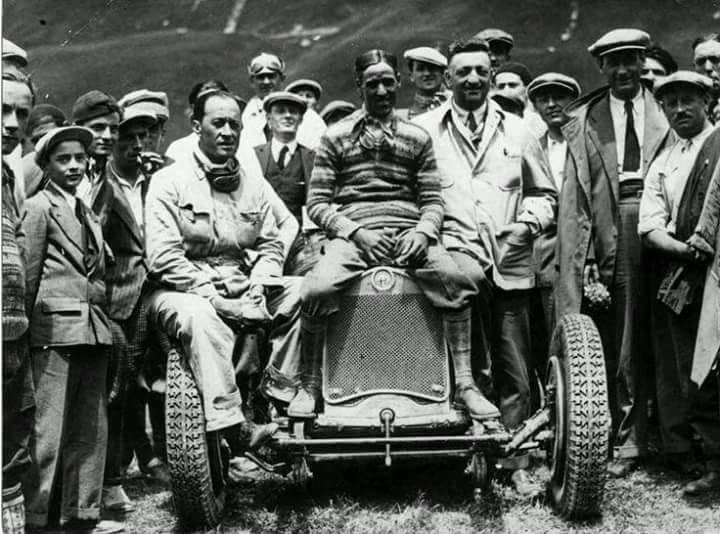
Tazio Nuvolari never gave up to the inferiority of the car or mechanical failures.
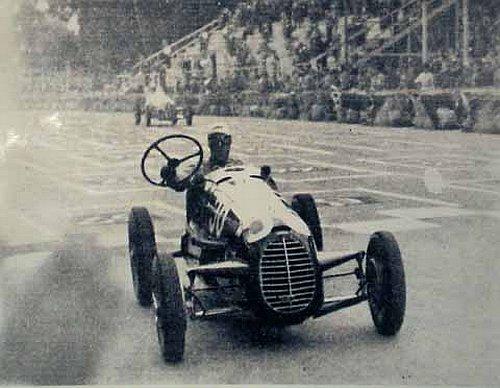
In Brno, in 1935, he finished second on the left rear rim without tire, while in Turin, in 1946, crossed the finish line with the steering wheel in one hand, showing it to the crowd, and driving with the other that moved a wrench applied to the steering head. The numerous accidents of which he was victim, also contributed to the myth, creating around him the indestructible man's fame. Those who knew him closely argued that Nuvolari had only one fear, that of dying in his bed as, exactly, happened in 1953, after a painful lung disease.

Nuvolari’s driving style was unmistakable and impossible to imitate. In fact, he invented what was then called the "controlled derapage", the art of making a turn skidding with the rear wheels in oversteer. He called turns "resources".
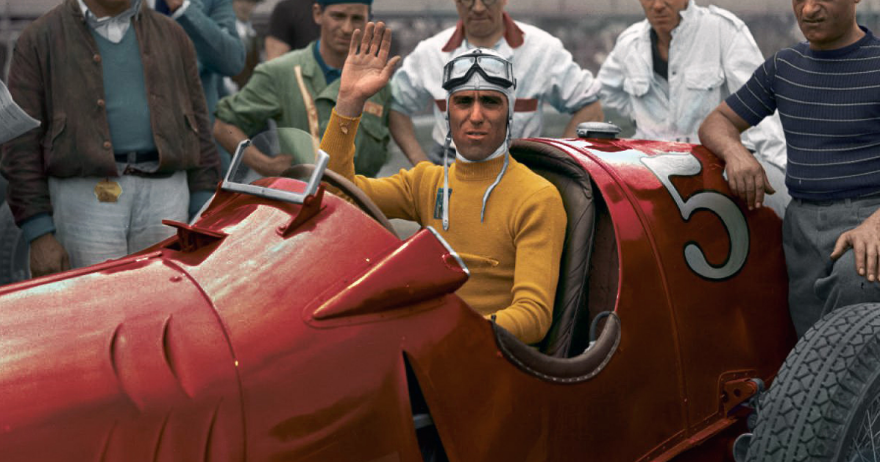
He was racing with a yellow T-shirt, black leather jacket and blue pants, his uniform. He wore on the neck a tricolor ribbon, with a gold brooch shaped like a turtle, that was donated him by Gabriele D'Annunzio.
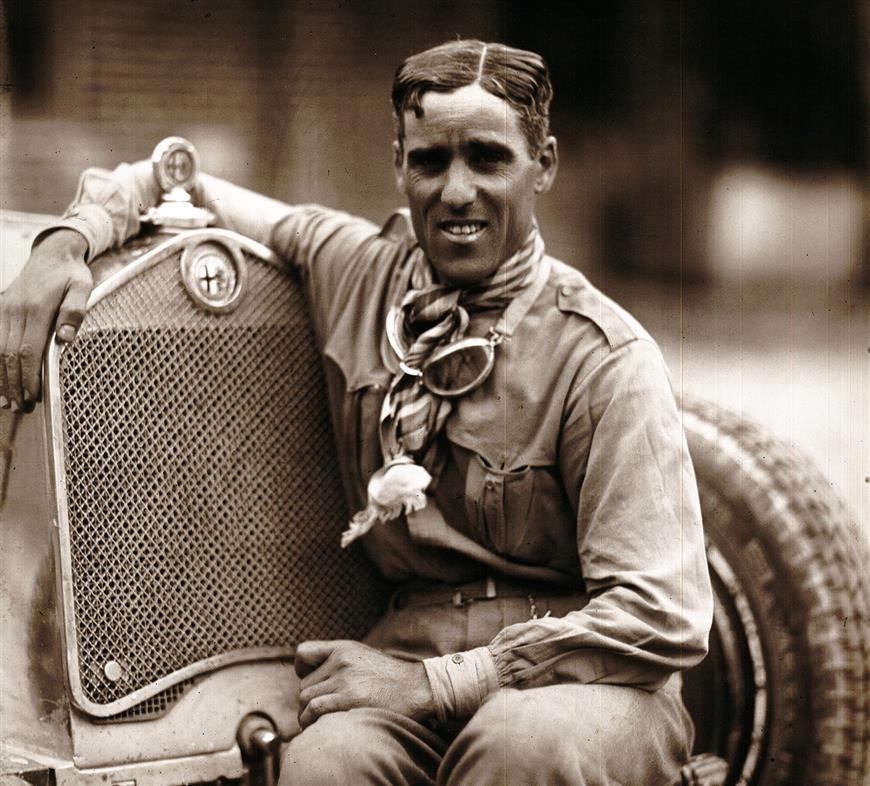
Nuvolari, Cisitalia D46.
The first legendary victory was the Mille Miglia in 1930. Tazio Nuvolari and Achille Varzi competed with two Alfa Romeo 1750, almost identical: the story tells that the Mantuan overtook in the dark, in the end of the race his teammate’s car, approaching it with headlights off, to avoid being identified. It was true or not, the particular contributed to increase the already considerable popularity of the Mantuan and that of Achille Varzi.
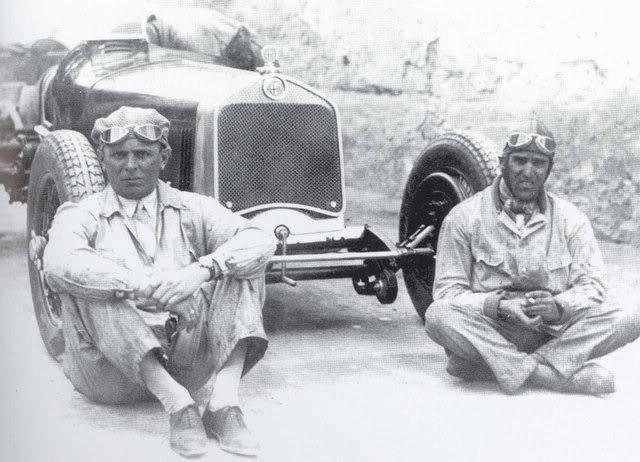
"Nuvolari, besides having always been my greatest rival, was the best racer of all time. He cannot be defined as a master but an artist of the steering wheel. A master could teach. Art cannot be taught." Achille Varzi
The two were involved in a rivalry that divided Italy in two, raising a dualism that only Coppi and Bartali, later, would be able to reproduce. Nuvolari was the emblem of the maximum boldness and of the attacking drive, intended to inflame the crowd. Varzi was given an innate class, tremendous efficiency, but gave little to the show.

Nuvolari's career was studded with victories, which could have been many more if the wars had not taken away precious years of racing and if he had not often had to fight against better cars.
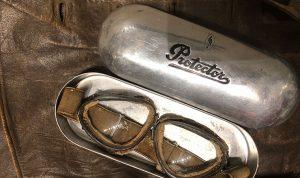
The glasses of Tazio Nuvolari.
In private life Tazio Nuvolari was anything but lucky. In 1937 he lost his son Giorgio, showing to suffer the blow also on the race track. Unfortunately for him, the cruel destiny was to take away even the second son Alberto, a few years later. It is no coincidence that many photos of Nuvolari often portray a man with eyes veiled by sadness. Outside the car, the Mantuan champion had to overcome terrible trials and certainly was not helped in this by his great celebrity. The races were the refuge to hardly bearable pains by a man.
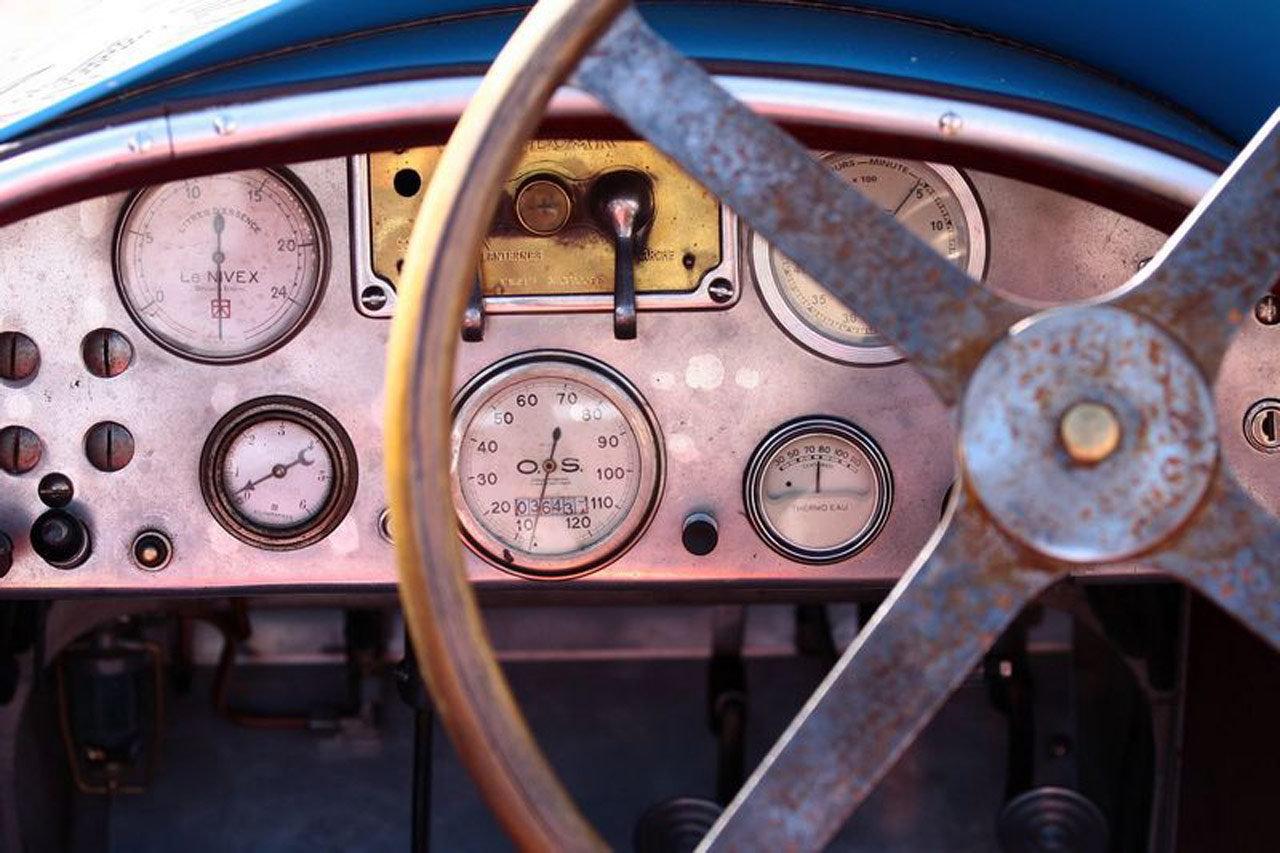
Even because of this, when Nuvolari was racing the crowd went wild, touched in the heart by a deep emotion. In the history of motor racing, no driver managed to strike the imagination of the people as the "Flying Mantuan".
Videos
Juan Manuel Fangio
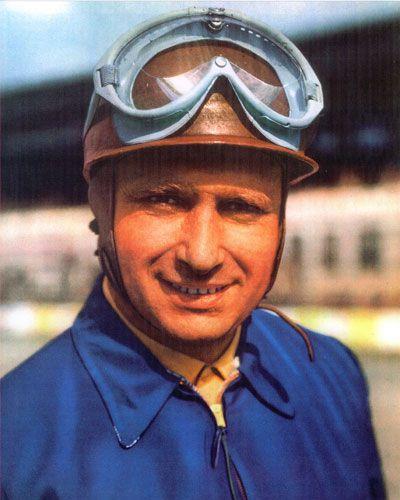
Juan Manuel Fangio Déramo - born on 24 June 1911 in Balcarce, Argentina - died on 17 July 1995, aged 84, in Buenos Aires. He, therefore, died at a very advanced age. It seems a trivial description but, for a driver of those years in which people almost always died on the track, such a "normal" life could be considered an absolutely unique thing. Son of Italian emigrants, his father was a bricklayer and his mother a seamstress, Juan Manuel began working in various South American workshops and, from there to the races, the pace was short. At first he competed under the pseudonym of Rivadavia, but soon changed to his real name: Juan Manuel Fangio.
Nicknamed El Chueco ("the bowlegged one", also commonly translated as "bandy legged") or El Maestro ("The Master") he was a racing car driver who dominated the first decade of Formula One racing, winning the World Drivers' Championship five times with four different teams: Alfa Romeo, Ferrari, Mercedes and Maserati; a feat that has not been repeated.
A member of the Formula 1 Hall of Fame, he is regarded by many as one of the greatest F1 drivers of all time and holds the highest winning percentage in F1, 46.15%, winning 24 of 52 F1 races he entered. From childhood, he abandoned his studies to pursue auto mechanics. He raced from 1938 to 1958, participating in 200 races and winning 78 of them.
Fangio, unlike later Formula One drivers, started his racing career at a mature age and was the oldest driver in many of his races. He had no compunction about leaving a team, even after a successful year or even during a season, if he thought he would have had a better chance with a better car. As was then common, several of his race results were shared with team mates, after he took over their car during races when his own had technical problems.
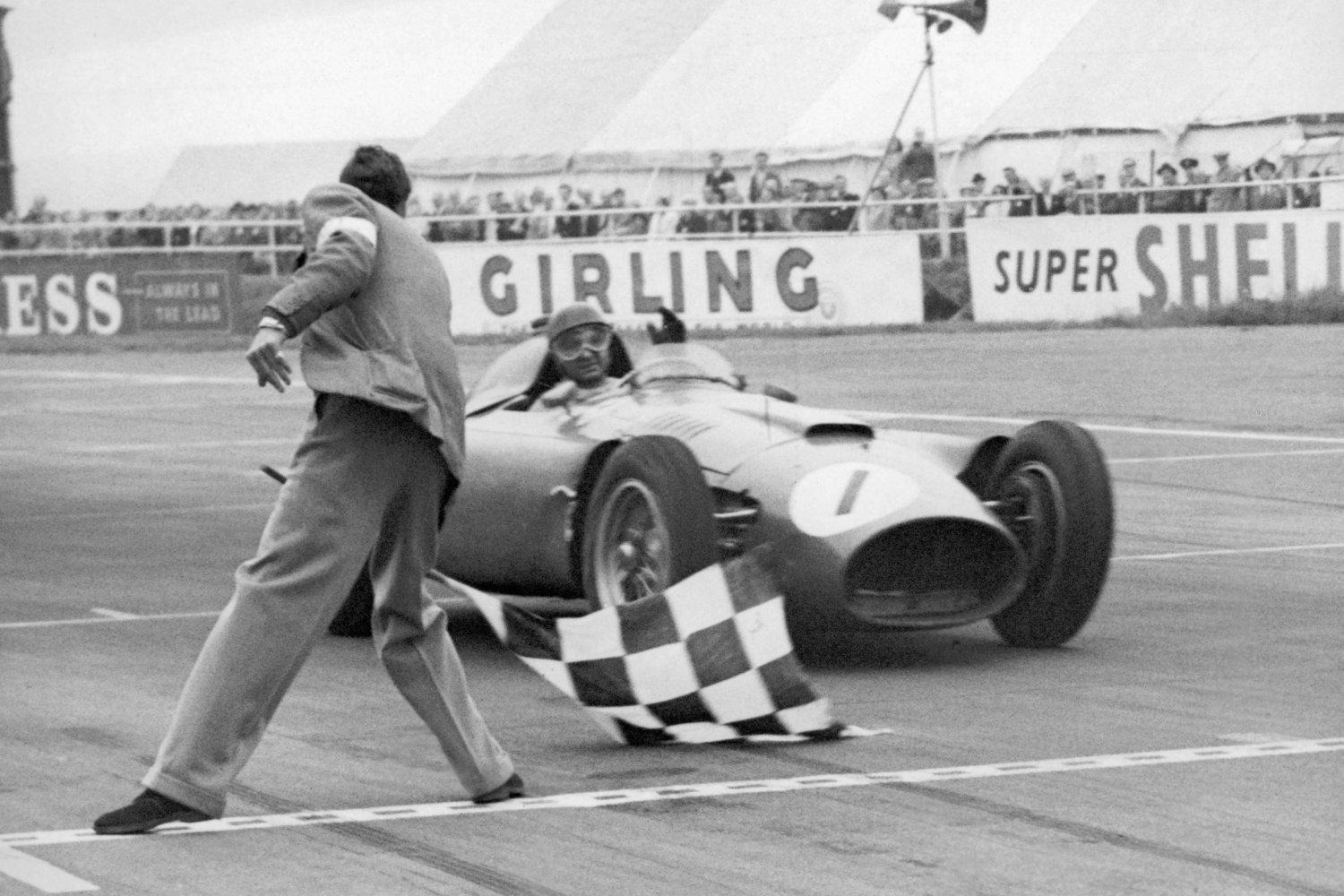
Juan Manuel Fangio wins in 1956.
In 1956 Fangio moved to Ferrari to win his fourth title.
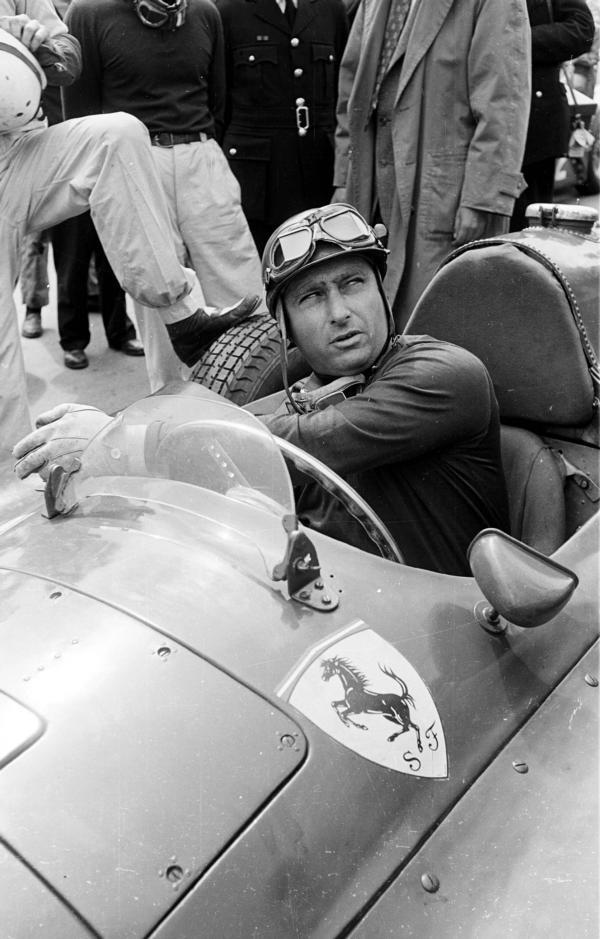
Enzo Ferrari and Fangio didn’t have a very warm relationship, despite their shared success. A silent and enigmatic man, Fangio, convinced everyone but Enzo Ferrari.
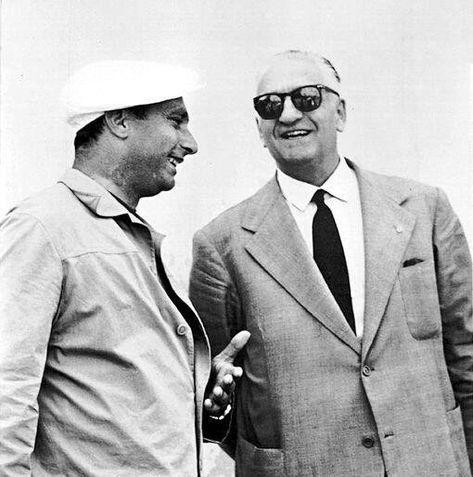
The first time Fangio met the Drake, in 1949 at the Modena racetrack, the two chatted for about an hour but barely exchanged a dozen words: an official of the Argentine Automobile Club had acted as an intermediary. Things didn't improve even in future because Ferrari, as usual, had an impenetrable expression, just like Fangio who, moreover, with his perennial smile and his squint confused anyone. The Argentinean had a difficult temperament and a shady character. About him Ferrari said he was a top driver on the car but was plagued by persecution mania. "Manuel Fangio remained for me an indecipherable character. His racing stature was, instead, indisputable....". “Fangio has never married any team. Aware of his abilities, he chased all the possibilities to always drive the best car of the moment and he succeeded, putting his selfishness, legitimate and natural, before the affection that has instead linked other great drivers to the life of a brand in good and in bad luck. But he has always fought not only for first place, but also for the rear rankings, just to get the car to the finish," Ferrari wrote.
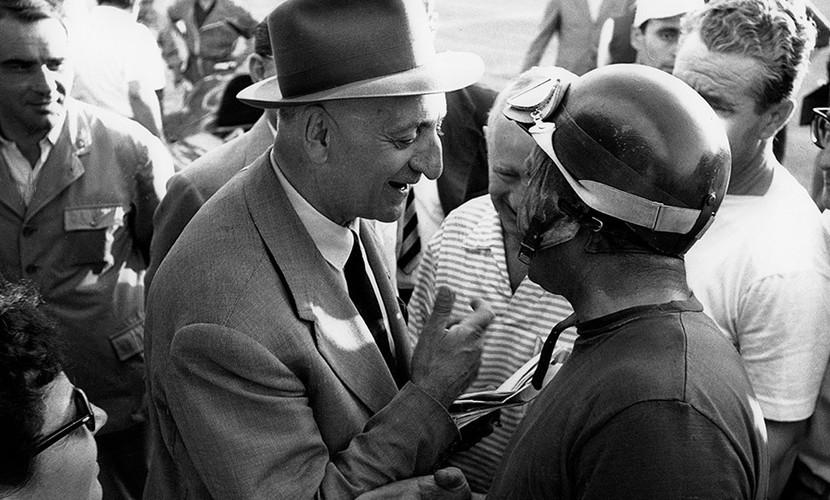
Enzo Ferrari and Juan Manuel Fangio.
"I saw him for the first time in the spring of 1949 at Autodromo di Modena, Ferrari added. There were other drivers, other cars. I watched him for a few laps, I came to hold my eyes on him. He had an unusual style: he was, perhaps, the only one to get out of curves without shaving the outside straw bales. This Argentinean, I said to myself, is seriously good: he gets out of curves very fast and remains in the middle of the track".
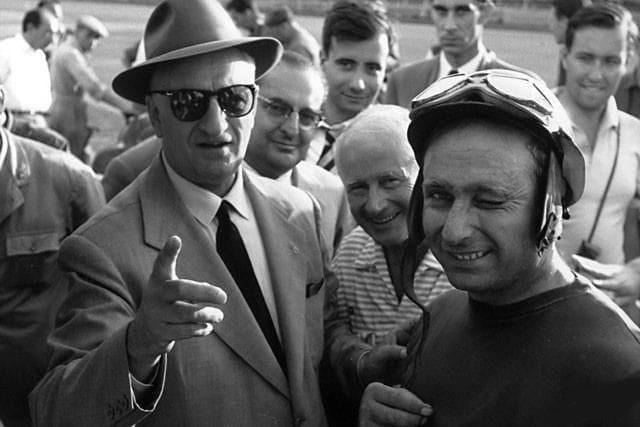
Ferrari was attracted to that sort of automaton like a magnet but his agitation, in the face of so much mastery behind the wheel, became astonishment in the 1949 Monza Grand Prix, when the Argentine champion raced with an unofficial Ferrari, that of the Equipo Argentino. The cars of the Ferrari team, on the other hand, were entrusted to Ascari and Villoresi, the latter just snatched from the clutches of what today would be called Maserati 'Team'. Official car or not, Fangio flew away immediately and was able to break away from his rivals with such ease that many suspected that his car was far more powerful than the cars of Ascari and Villoresi. But it wasn't like that, on the contrary... And this Ferrari knew well.
The Commendatore always had a wavering relationship with his drivers, except the three he really cared about: Nuvolari, Ascari and Gilles Villeneuve (but, according to the journalist Nestore Morosini, he was unlikely to renew the contract to the Canadian and then it happened the fatal accident at Zolder in May '82). Even with Niki Lauda great rushes and the Austrian who swore eternal fidelity and then leave to the Brabham-Alfa Romeo: he canceled him. "If he would have stayed with us he could have matched Fangio’s 5 world championships”. The measure of affections was dictated by the rule: the driver must never obscure the car.

Juan Manuel Fangio and Michael Schumacher.
His record of five World Championship titles stood for 45 years before German driver Michael Schumacher surpassed it in 2003. Schumacher said: "Fangio is on a level much higher than I see myself. What he did stands alone and what we have achieved is also unique. I have such respect for what he achieved. You can't take a personality like Fangio and compare him with what has happened today. There is not even the slightest comparison."
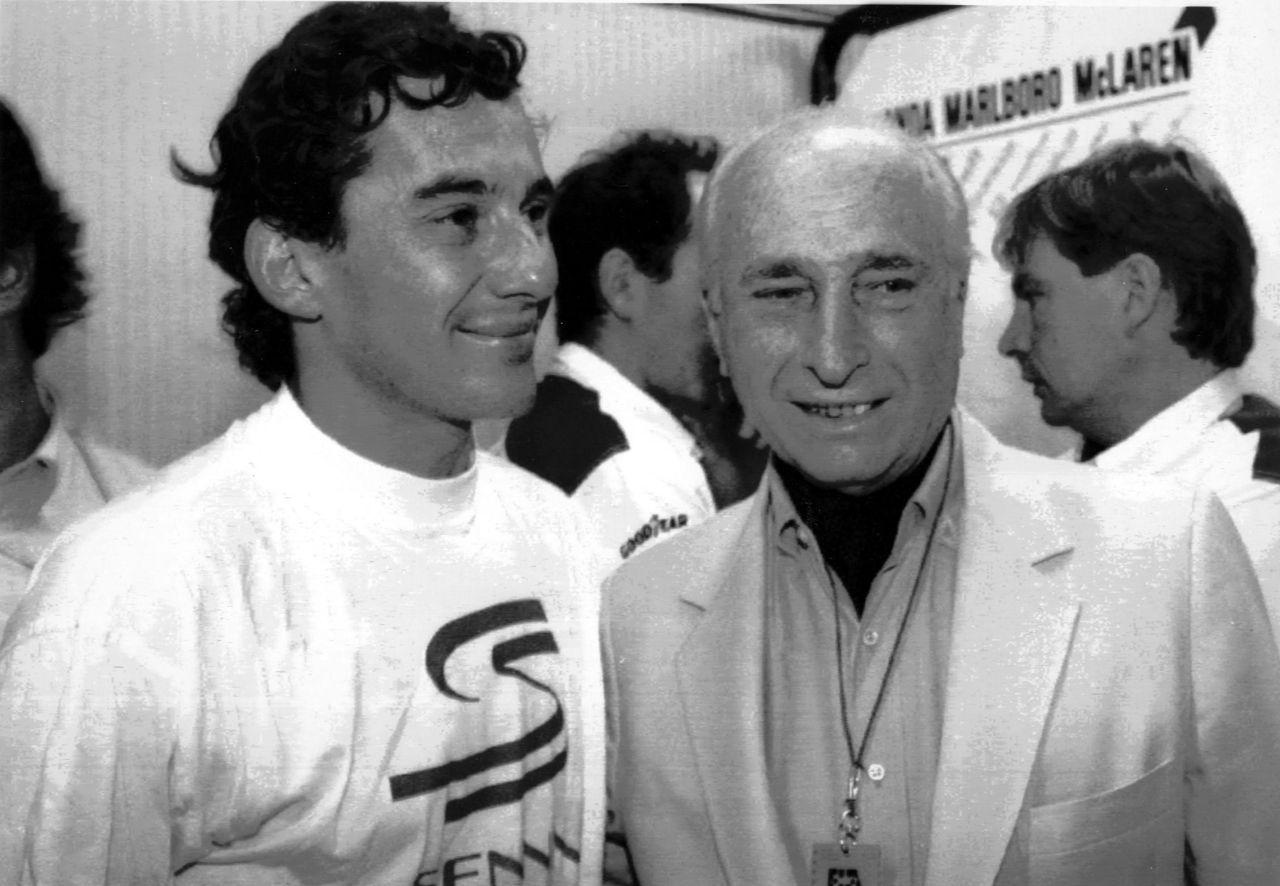
Ayrton Senna and Juan Manuel Fangio.
Ayrton Senna said: "what he did in his time is something that was an example of professionalism, courage, style and, as a man, of human being. Every year there is a winner of the championship, but not necessarily a world champion. I think Fangio is the example of a true world champion".
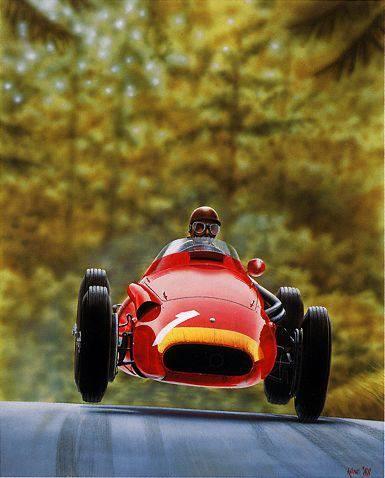
Before knowing the triumphs of F1 Fangio was a mechanic and prepared his cars to participate to real road marathons, the "Carreteras", from Buenos Aires to Lima and back, passing twice for the Andes. A long apprenticeship, therefore, the smell of the workshop, the roar of engines. It is said that all the mechanics of the great European teams adored him as it was no longer the case with no driver. The legend told that he divided with them the prizes.
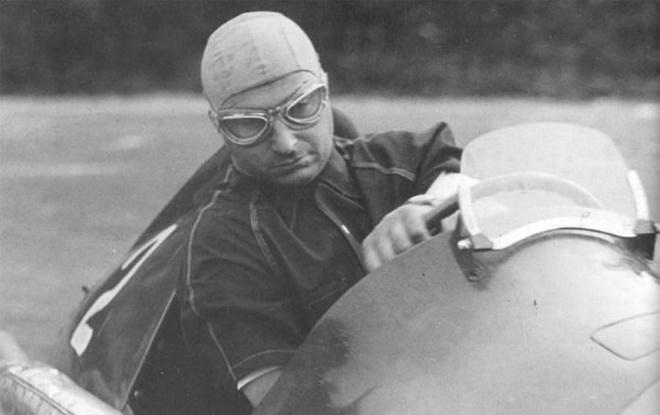
Juan Manuel Fangio at Spa in 1951.
He was a champion because then drivers were dying one after another. In the years of his triumphs 30 dead were counted. He basically was only touched by tragedies: it was said that he understood before any other dangerous situations. In 1952 in Monza he broke his back and neck in the Lesmo curve. But he came from a night spent driving a car because there were no more planes from Paris to Milan due to the bad weather. He narrowly escaped the disaster of Le Mans, the 24 Hours of 1955. He avoided the Mercedes that fell on the audience: the victims were 84, hundreds injured.
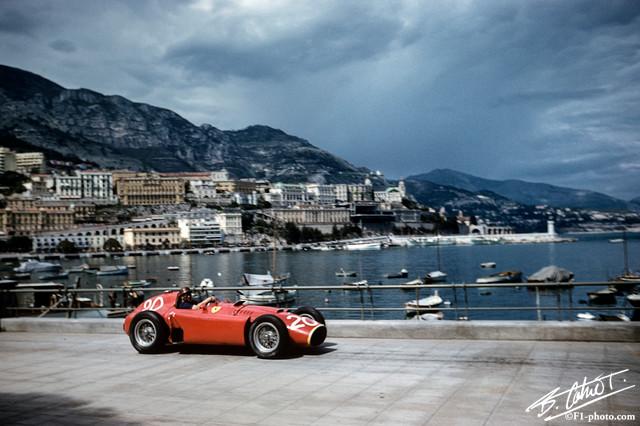
Fangio at Monaco in 1956.
When he began racing in Europe and in F1 had already 38 years. He retired in 1958, after the death of Luigi Musso.
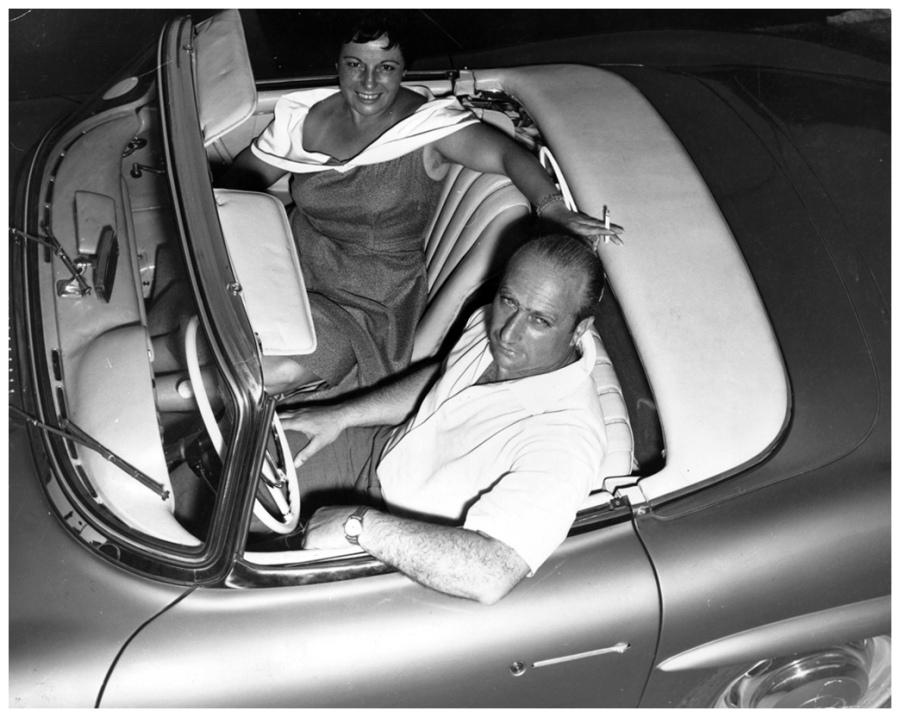
Fangio and his partner Andrea in Rapallo in 1958.
About women, he said: "when you race on the track, you cannot go around making love. Less difficult it was the thing at the beginning, when I was running the races "Turismo de Carretera".
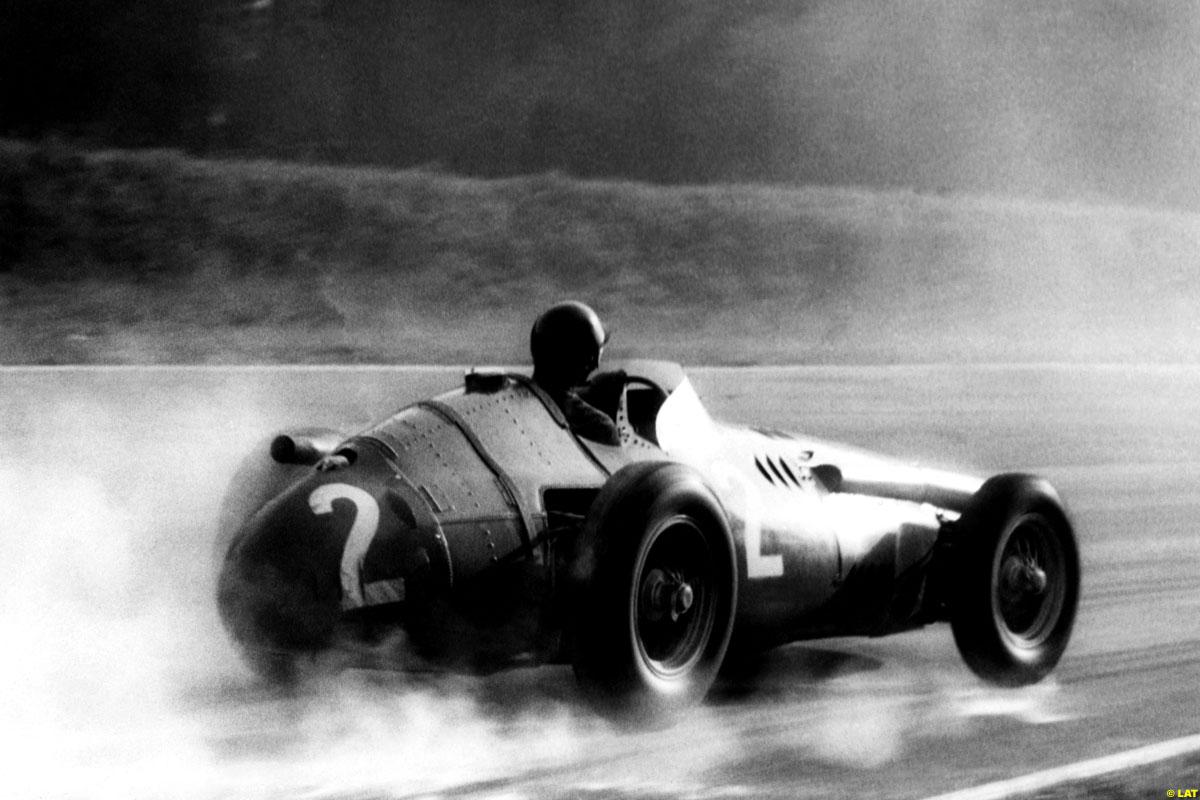
Fangio in the Maserati 250F.
"You must always strive to be the best but you must never believe that you are," Fangio said.
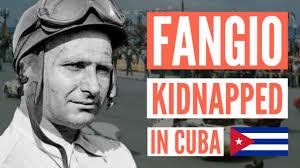
At 8.55 pm on Sunday 23 February 1958 in the lobby of the Lincoln Hotel in Havana, Manuel Uziel approached a group of five people who were discussing modifications to be made to a Maserati for tomorrow's race. "Mr. Fangio?". The five-time Argentine world champion replied annoyed. "What do you want?" "I'm from the 26 July Movement, you have to come with me," the man ordered pointing a revolver at his ribs. "Please don't force me to shoot you and follow me." Twenty-seven hours and many front pages of newspapers around the world later, Juan Manuel Fangio was returned by Fidel Castro's rebels to the men of the Argentine embassy in an apartment at Calle 12 Norte. "These are my kind kidnapping friends," Fangio himself took charge of making introductions. The kidnappers took their leave with endless excuses and an invitation: "when the Revolution will have triumphed, you will return as our guest of honor". And so it was: Fangio was received by the leader maximo a year and a half later. The story became a movie: Fangio Operation.
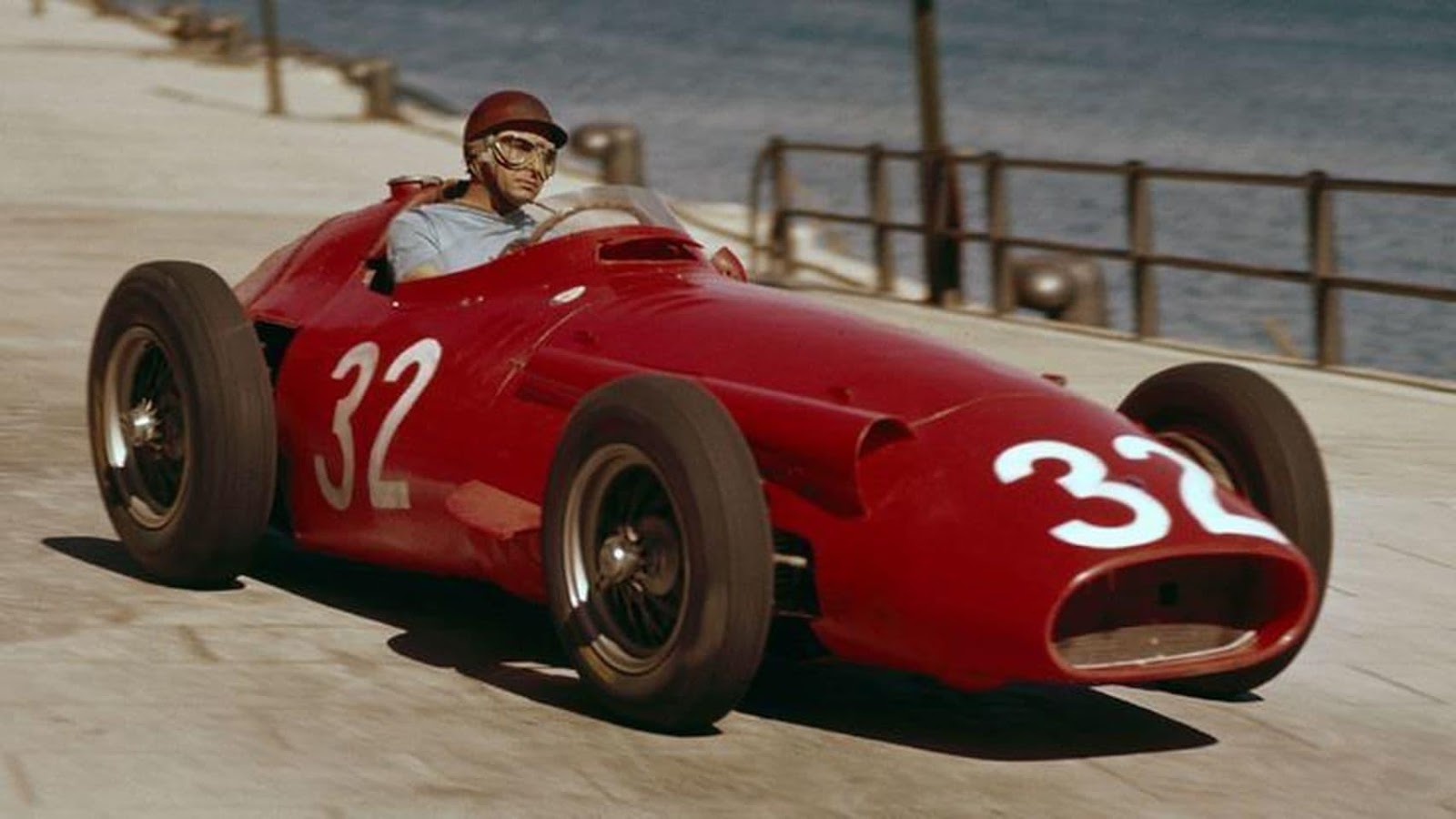
Kidnapping him was the only way to keep him from winning. The Maestro retired from racing, at the age of 47, five months after that flash kidnapping, a striking demonstrative action against the Batista regime to prevent the reigning champion from being at the start on the Malecòn. Juan Manuel Fangio had left Ferrari two years earlier because, it is said, in economic disagreement with the Drake: the two had never bonded, although Engineer Enzo had also granted him a personal mechanic, Casani, who slept inside Fangio's single-seater during the days of the grand prix. El Cheuco knew how to be loved by mechanics: in 1953, for instance, the Maserati mechanics exchanged the numbers of the cars the night before the race, to make him race in the one better than his teammate's. But the last Maserati, in 1958, was not up to par. He had complained about it to the head of the team Bertocchi: "if the shock absorbers don’t work, mount those of last year". "It cannot be done, these are sponsored by a Dutch company". And he realized that this world was no longer his. During the Reims GP on 6 July 1958, which costed Luigi Musso his life in a Ferrari, Fangio found himself with the clutch pedal walking around the cockpit. He stopped in the pits in a rage and threw it on the feet of Bertocchi who, however, convinced him to get back on track without clutch. At the end Ferrari driver Mike Hawthorn, leading with a lap of advantage, braked the Dino 246 to let Fangio cross the finish line, respectfully sparing him the shame of being lapped. The Argentine got out of the car and whispered to his mechanics: "it's over".
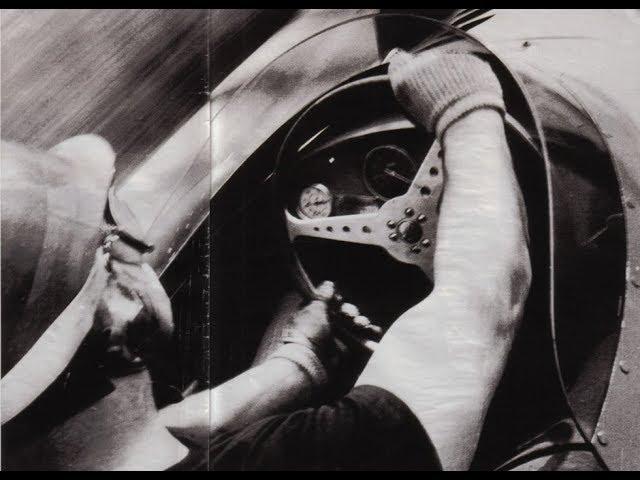
His 5 world championships record - from '51 to '57 in 4 different cars - lasted 46 years, before Michael Schumacher. But, beyond the suggestive and impossible comparisons and the mythological aura that surrounds that reckless pioneer with a dirty face and a leather cap instead of a helmet, perhaps a driver will never be born capable of winning with the same average, practically a race out of two: 46%. The Demon of the tracks was originally from the province of Chieti and was named after the saint of June 24, Giovanni and the King of Italy, Vittorio Emanuele III. The grandfather had emigrated from Castiglione Messer Marino to make charcoal in Balcarce, while his father Loreto was a bricklayer. At 9 years old Juan Manuel was in a blacksmith's shop and at 12 in a garage, where he learned to drive.
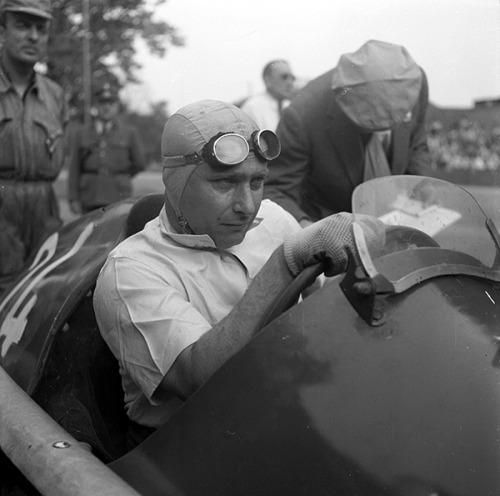
He disputed the first race at the age of 25, adapting the blue taxi of a friend's father (a 1929 Ford), under the pseudonym of Rivadavia, the name of the football team for which he played, so as not to be discovered by his parents. In 1940, with a Chevrolet won at the lottery, he won the Grand Prix of the North, a classic race of over ten thousand kilometers from Buenos Aires to Lima and back, climbing over the Andes twice on dirt mule tracks. During the Second World War he made some money by buying and selling trucks and tires and, in 1949, it was the president himself, Juan Peron, who financed the transition to Formula One in Europe. At 37 years old.
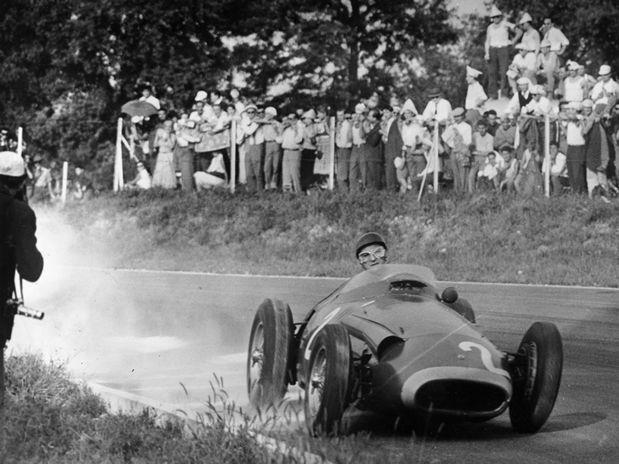
His first racing car was the Alfetta 159, 1479 cm³ of displacement and 315 km/h of top speed, with which he won the first World Championship in 1951. The last one was won by him in a Maserati 250F in 1957, delivering to the legend one of the most memorable grand prix in history when, in comeback, he did at the Nurburgring a string of record laps until he passed the two Ferraris at the finish. At the end of the race Fangio said: "I have never driven that quickly before in my life and I don't think I will ever be able to do it again". At Nürburgring Juan Manuel came into his own, setting one fastest lap after another, culminating in a record-breaking time on lap 20, a full eleven seconds faster than the best the Ferraris could do. On the penultimate lap, the Argentinean passed both Collins and Hawthorn and held on to take the win by just over three seconds. "If I hadn't dodged, Hawthorn said, the grandfather would have passed over me". With Musso finishing down in fourth place, Fangio claimed his fifth title. This performance is often regarded as the greatest drive in F1 history and it was to be Fangio's last win. After 1958, he spent his life collecting honors and selling Mercedes. He got into a racing car for the last time in 1993, two years before he died, with five bypasses and just operated for kidney cancer. It was an Alfetta 159.
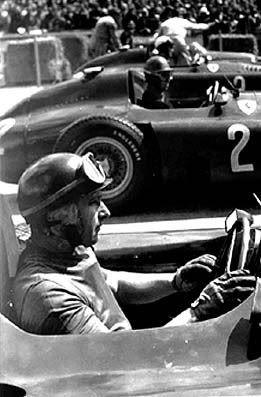
“Do you feel how my heart beats? Here, this is what it feels like to start alongside Fangio.” Alfonso de Portago
Videos



Comments
Authorize to comment